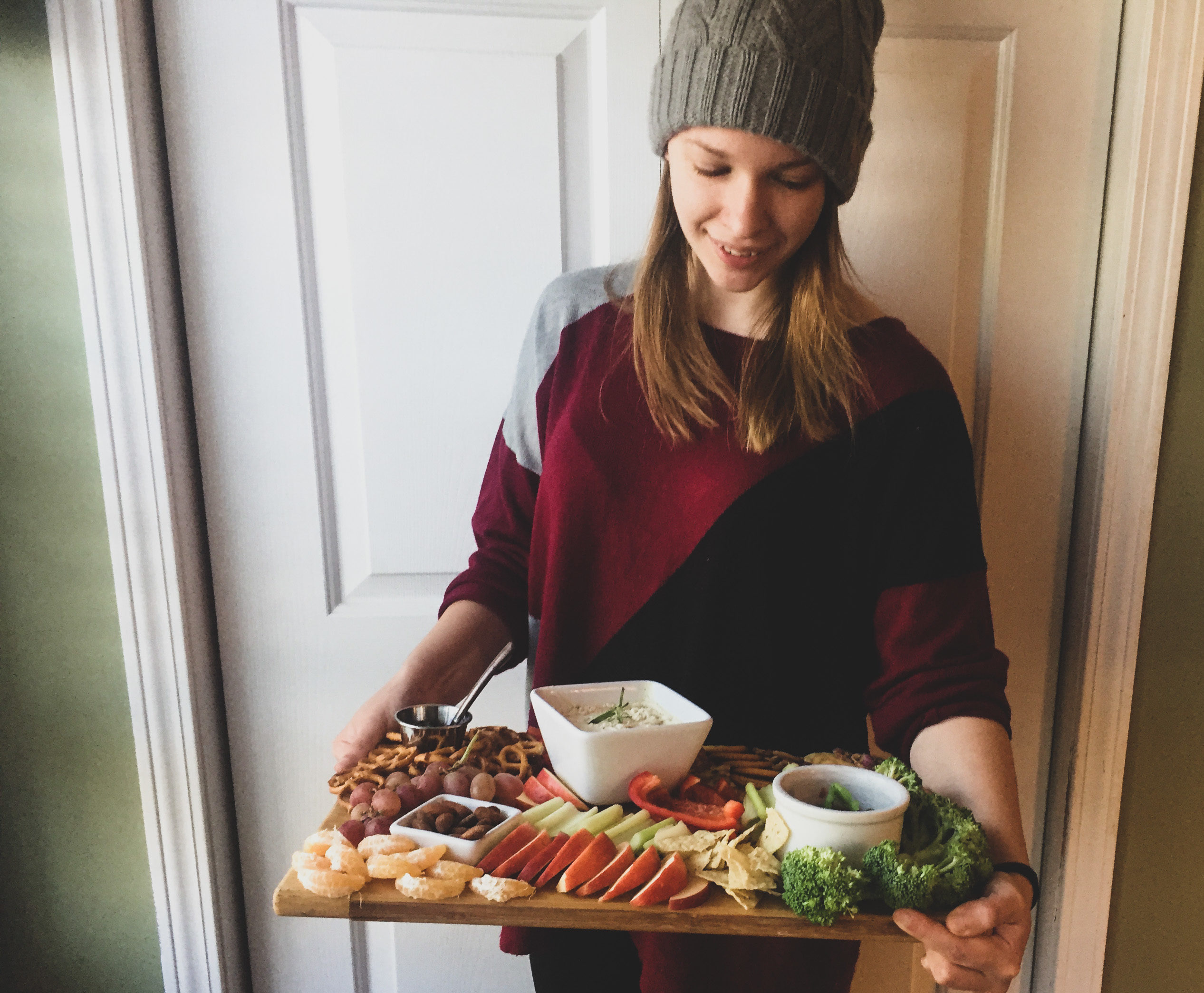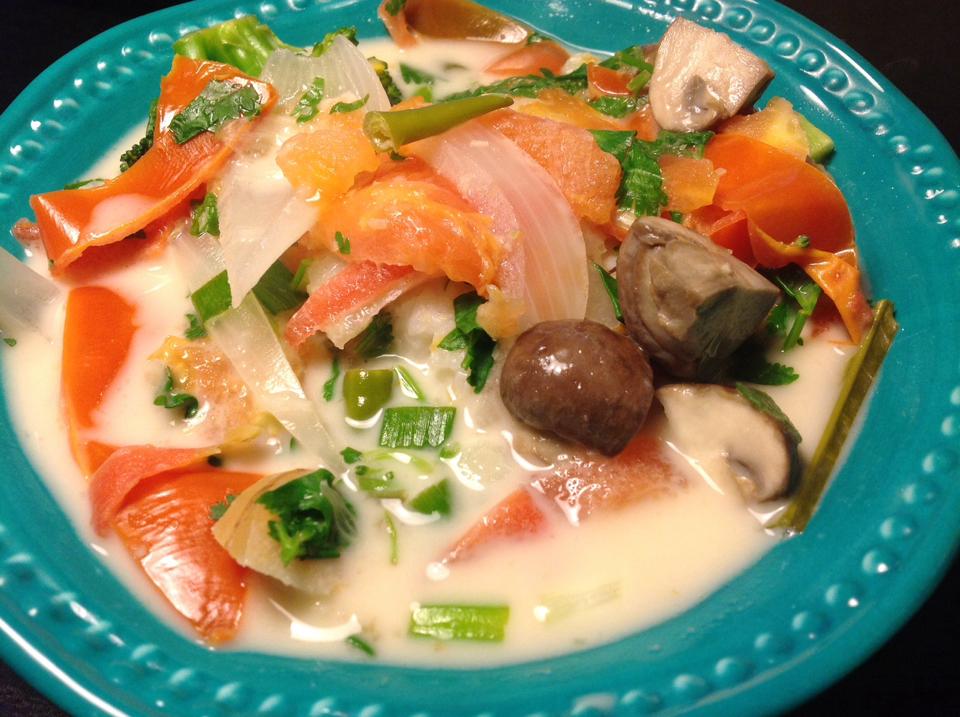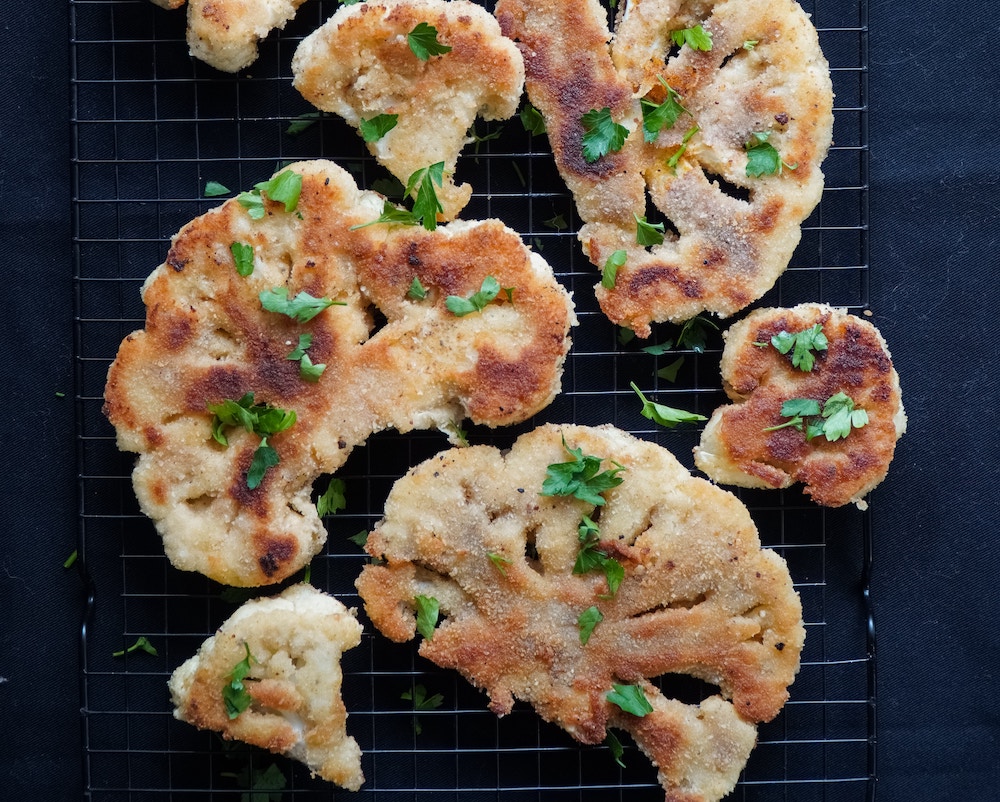
I have fond memories of the holiday season during my childhood: putting bulbs, baubles, and lights on the Christmas tree, driving ‘round to see the decked out houses, and celebrating the season with my extended family on Christmas Eve.
Christmas Eve has always been my favorite night. Each year, my extended family gathers together to break out more appetizers than are needed—from dips and crackers to the beloved mushroom puffs. However, one item among the whole array always takes center stage: the charcuterie.
I like to think my family participated in the charcuterie board craze “before it was cool”—practicing the French art of nibble plating since the late 2000s. My mother would always put together the most elaborate of boards, filled with veggies, cheeses, meats, dips, fruits, nuts, and more, as we would gather together and graze.
This year, however, I’m taking our favorite family tradition and turning it vegan-style. As the self-proclaimed charcuterie queen (and let me tell you, I’ve created my fair share of charcuterie boards in the day), I’ve laid out some simple steps for how to make the definitively best vegan charcuterie board this holiday season with a helpful phrase you won’t forget: Create. Plate. Decorate. Celebrate.
Step 1: Create
Before you assemble your jaw-dropping charcuterie, you first need to gather and prepare all the various mix-ins. The more things on the charcuterie, the better. It’s important to get a wide variety of items on your charcuterie as well. To make sure your charcuterie contains all the necessities, I’ve broken down the main charcuterie categories below.
Veggies & Fruits
For fruits and veggies, medjool dates, grapes, peppers, and broccoli are a classic, but I typically opt for whatever I have already in my fridge. Cut up some cute apples, grab some celery stalks, slice up a pear, and just have fun!
Dips, Tapenades, Jams & Spreads
For me, a charcuterie isn’t complete without having dips and spreads. My go-to is a tiny bowl of raspberry jam, salsa, and a creamy dip of some sort (I used a vegan cream cheese to make a Ranch Dip this year), but you can also add hummus, guacamole, salsa, or any other dip you like best.
Dippers
You can’t have dips without dippable items! Grab some tortilla chips, crackers, pretzels, or fresh homemade bread (there’s nothing better than fresh, out-of-the-oven garlic bread) to transport those delectable dips right into your mouth.
Vegan Proteins & Cheeze
Since charcuterie technically stands for a collection of cured meats, a vegan charcuterie wouldn’t be complete without some protein and cheese alternatives. I’ll usually opt for whatever I can find at my local grocery store, but you can also DIY it and make your own vegan feta or fry up some mushroom baycun. The decision is yours!
Step 2: Plate
Once you’ve gathered all your bite-sized bits, it’s time to assemble your board. Most charcuterie boards are made on a wooden cutting board or a slate, but you can use whatever board you have available in your house. When arranging your charcuterie, it’s important to keep the following art concepts in mind: shapes, space, and color.
Shape
When considering shape, you want to think of the overall shape of the board as well as the shape of the individual items. Some opt to arrange their charcuterie in whimsical shapes such as a Santa face or a Christmas tree, but I prefer the more traditional route of simply filling up the board. As for the shape of the individual items, I try to make sure I keep them in grid or circular patterns so one item blends well into the next.
Space
When plating your charcuterie, it’s all about filling the space. I like to start with three smaller bowls as focal pieces (filling them later with dips, jams, and/or nuts) and then filling dippers, veggies, fruits, and vegan meats / cheese around those bowls in lines and circles.
Color
As you plate, try to pare complementary colors next to each other or distribute bright colors among neutral items. Since crackers, vegan meats, nuts, and vegan cheeses are mostly neutral in color, I start with the brightest colored items first (tomatoes, pickles, peppers, grapes, olives, etc) and then fill the rest of the space with the remaining neutral items.
Step 3: Decorate

Once you’ve laid out all your items, the next step is the garnishing and the finishing touches. Garnishes can be anything from well-placed sprigs of rosemary to adding a swirl or capers on top of your hummus.
When determining what garnishes to use, look at your board and ask yourself, Is this board already loud or does it still need color? If it’s lacking in color, use pops of fresh herbs to enhance the color contrast. If it’s already over-the-top, decorating might mean intentionally rearranging your plating to create a more minimalist effect. Taking a wedge out of a cheese log, fanning out the pieces of meat or veggie slices, or layering are a great way to make an over-the-top board a bit more manageable.
Step 4: Celebrate
Now for my favorite part—celebrate!
Once you’ve finished your perfect vegan charcuterie, it’s time to share your creation with those you love most. For me, I’m sharing this board with my family during our tree decoration this year. It’s the perfect snack to leave out and munch on as you celebrate season festivities, laughing and grazing as you go.
Are you making a charcuterie board this holiday season?
__
Photo: Dana Drosdick




